I’ve been learning nålbinding. (Other spellings are available.)
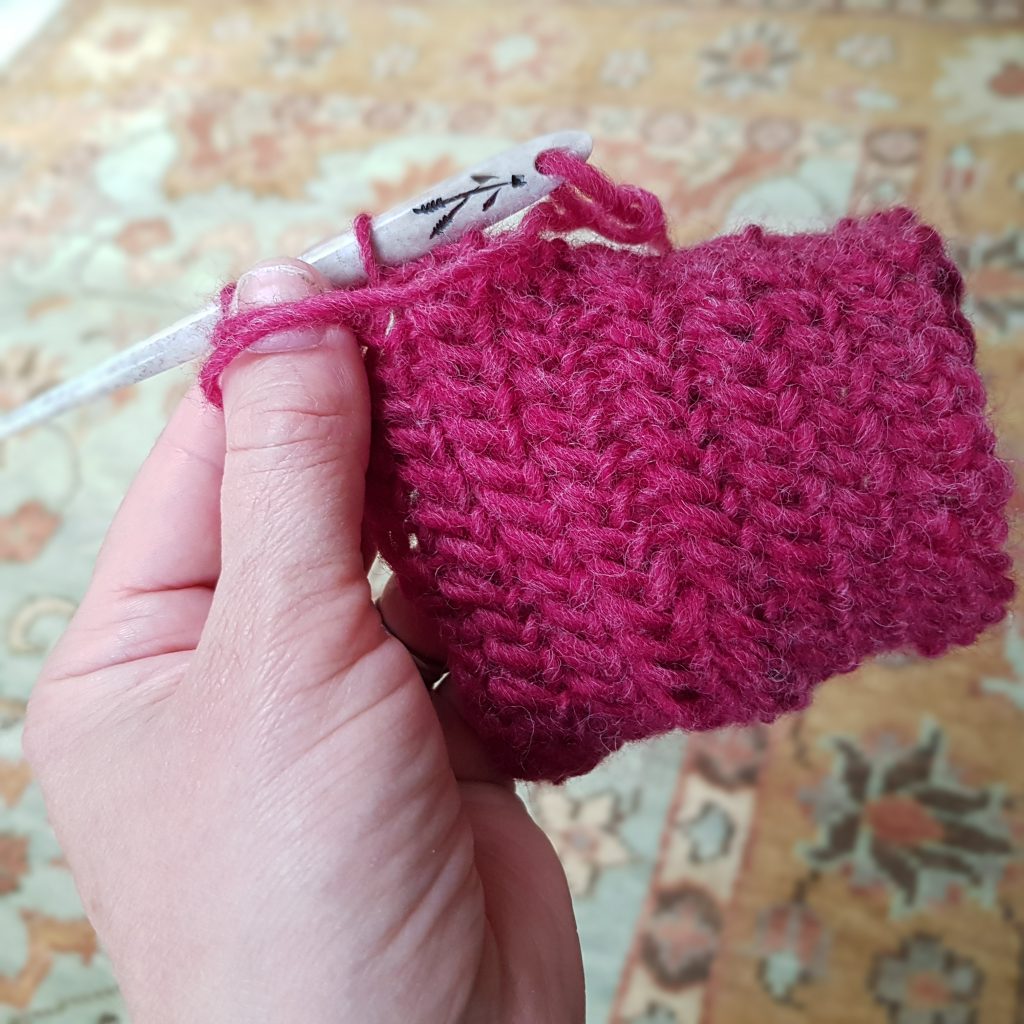
Not familiar with the technique? You’re not alone. It’s what people did at ‘Stitch-And-Bitch’ nights thousands of years ago, before they got round to inventing knitting and crochet. (And it’s still practiced today in some regions, in addition to enjoying a revival amongst historical re-enactment folk.)
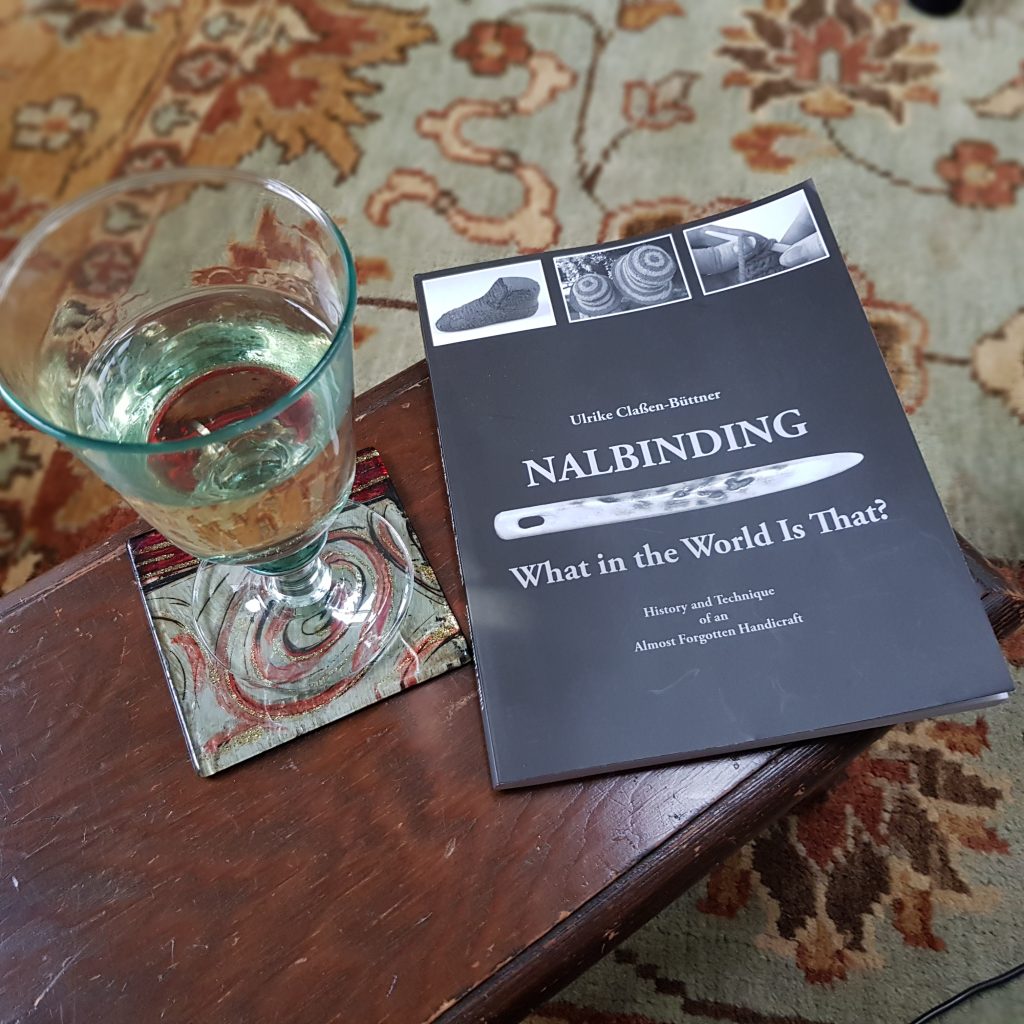
But I’ll save the history and possibilities of nålbinding for another post. It’s been a while since I learned a new yarn-craft, and doing so got me thinking about the process of getting your head round a fresh technique.
It’s all about literacy. And the challenge of learning any new yarn-craft is that you have to learn to ‘write’ (stitches) before you’re very good at ‘reading’ (stitches).
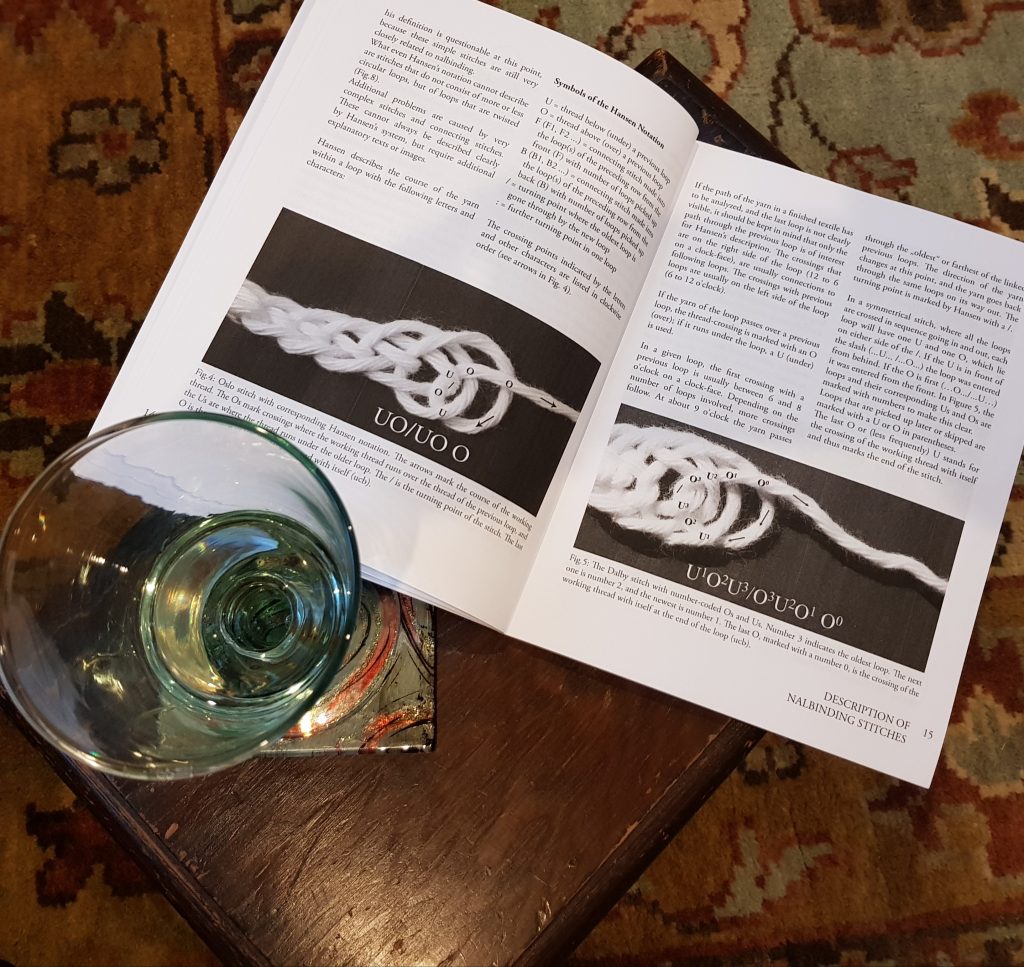
As a beginner, you’re told where to put your yarn/hook/needle/whatever, but at this stage you haven’t yet even learned to ‘read’ the ‘words’ (stitches) of the fabric that you’re creating. In my opinion, that’s what makes it difficult. Not that there’s any way of circumventing this learning-to-read, just as my children (the twinnage) took their time learning to read words.
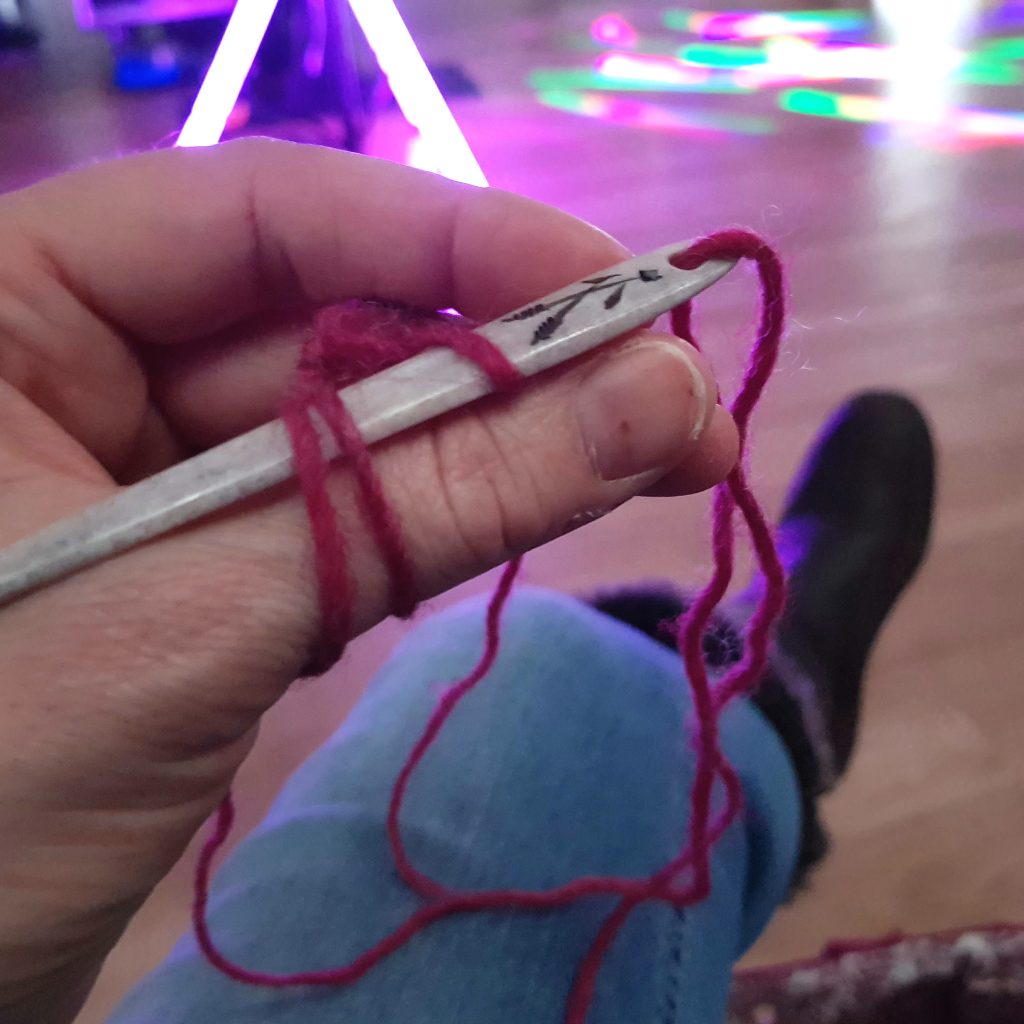
Slowly, slowly, one learns to interpret the meaning of that loop of yarn at the front of your work, and that makes the process of the craft so much easier. But you can only really understand the role of that loop of yarn once you have seen its siblings over and over and over again in different contexts. Your brain finally catches up and realizes, Yes, I know what that means. I’ve seen it before. That means I’ve – delete as appropriate – created a purl bump, dropped a knit stitch, made a double crochet, etc. At that point, the craft in question suddenly becomes considerably easier. You can put the instructions away and focus on your work.
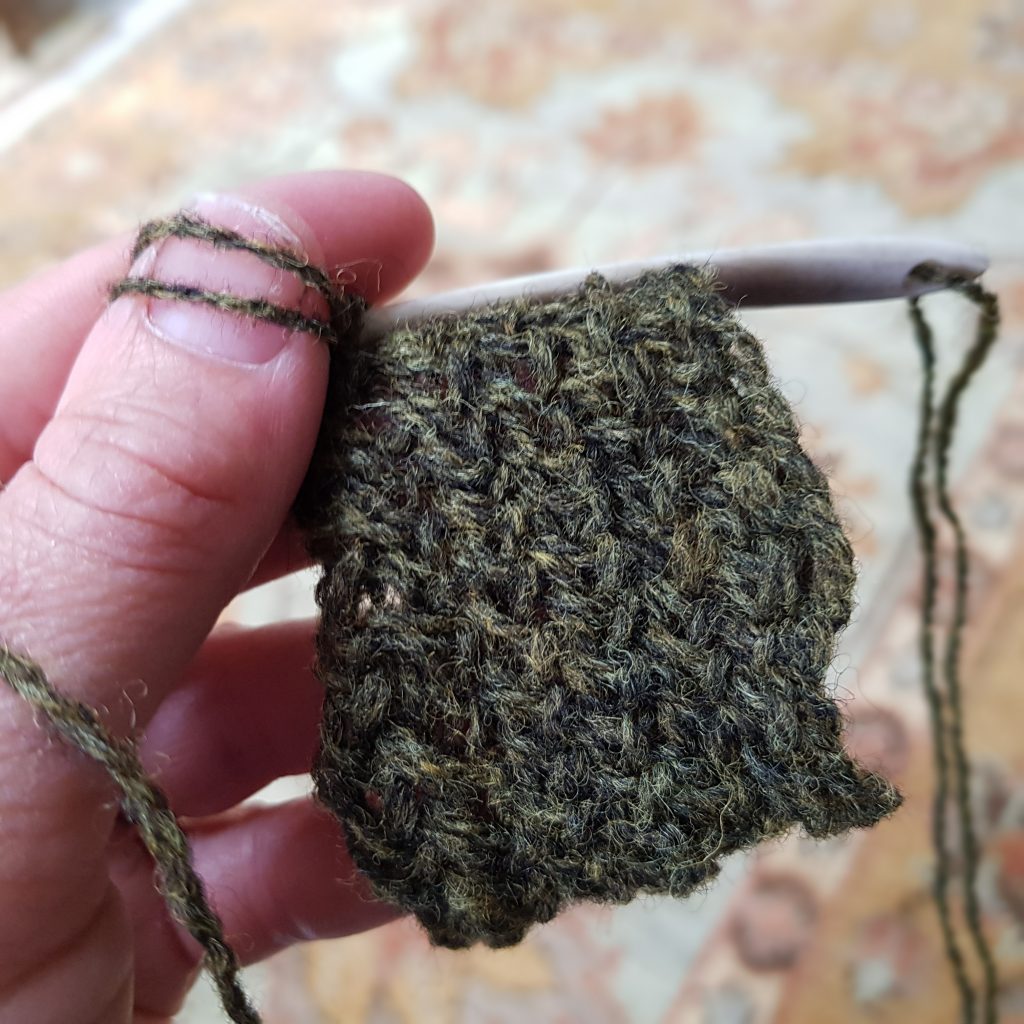
It’s just the same as when the twinnage learned to read. They learned to recognize the letter ‘a’, for example. But what turned them into proper, skilled, readers was learning to encounter an ‘a’ in different fonts/words/contexts. And of course it was the fluency in reading that massively enabled the fluency in writing.
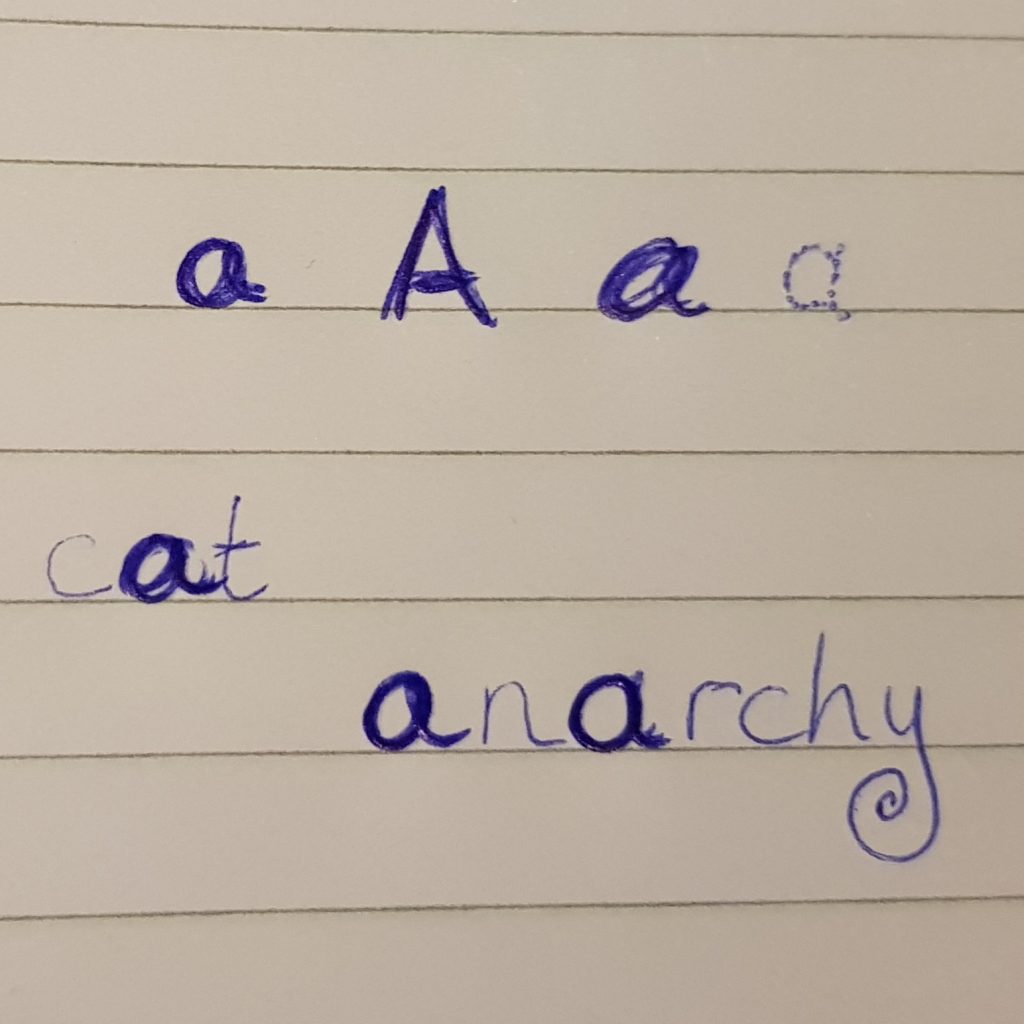
Just showing them a nice neat ‘a’ on a flashcard wasn’t enough, on its own. They needed to get used to all sorts of iterations of this oddball symbol in all sorts of circumstances. In the same way, diagrams of knit/crochet/nålbinding stitches alone, whilst useful, are rarely sufficient for the new knitter/hooker/nålbinder to really read and understand their work. And writing is r-e-a-l-l-y tricky until you’re fluent in reading.
Yet here you are at the beginning of your yarny journey, trying to write complex words that include the letter ‘a’ when you’ve not even yet become a fluent reader. Is that an ‘a’? Did I write it OK? Why does it look wrong? Should there really be three dots above it and a long tail?
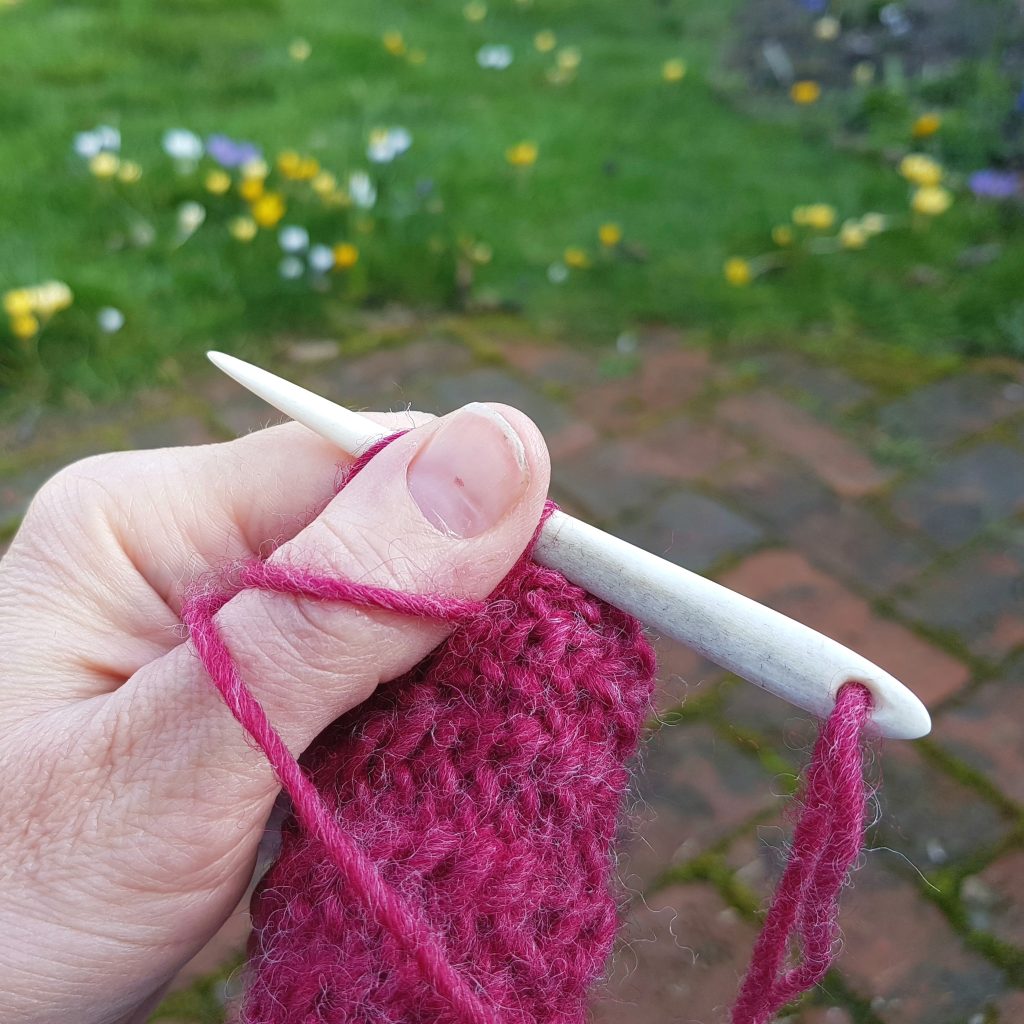
So I’ve been practising this fascinating old craft for hours and hours and slowly, I’m learning to read. And the more I can read, the more I’m enjoying nålbinding.
Looks fascinating, would love to know morr
I will write a post that’s all about the nålbinding itself soon. 🙂
Of all the things I’ve noticed in this post, your fingernails tell a big story! You’ve been busy, haven’t you? LOL I still have to wrap my head around fair isle knitting. I love it so, but I’m really not happy with the tension aspect, and until I master that, I’m not learning anything else. hahaha! I’m really glad you’re enjoying this new/old craft. <3
Oh no – I was hoping that nobody would notice the nails! They do take a battering from gardening, and so are definitely not things of beauty.
But speaking of things of beauty, don’t give up on the fair isle tension! If all else fails, a-bit-too-loose is better than a-bit-too-tight, but you can do this!
Oh, no! I think your nails are lovely. They speak volumes about the type of person you are. Too bad I no longer live in England, your fingernails say that we would be friends. 🙂
My nails (or what’s left of them) agree. ????
Wait… I bet this is the answer to my question of is it knitting is it crochet, is it both, looking at a handmade Viking item last week!
Very possibly!
I like your analogy between learning to read/write and learning a new craft. It’s brilliant!
Thank you. 🙂
Good for you! It looks incredibly complicated. I bet the finished fabric is dense and warm. Can’t wait to see what you do next with it.
It does seem quite complicated at this stage! I can see why the world (mostly) moved on to knitting and crochet…
YES! Years ago while visiting Sweden I saw nalbinding but could not get instructions in English = which made it all rather difficult. Please tell us more.
Yes, I can see that that would add an extra level to the challenge! I will write a post that’s more about the nålbinding itself fairly soon.
I was so excited to read this. I saw examples of nahlbinding at the Jorvik museum in York a couple of years ago. I bought the book and needle ( does one call it a needle?) but haven’t yet attempted anything. I remember that the instructions looked complicated! You have motivated me to dig it out of my big box of pending projects and give it a go. I can’t wait to see what you make!
If you are interested, there are YouTube videos showing a variety of stitches, as well as some sites online.
: )
Kath, go for it! It’s quite fun once you get over the initial WHAT ON EARTH… and as Jan says, there are some good YouTube videos out there…
I am a history major who enjoys all kinds of needle arts. This looks fascinating. I have just ordered two books on this yarn art and can’t wait to try it out. Thanks much!
And there are YouTube videos available, too, in case that helps. Enjoy!
I am a nalbinder too! How exciting that you are giving voice to such an ancient craft. It has a very interesting history. Would that we could still use these precious nalbound items to pay off our taxes! : ) With each loop, I feel as though I am reaching through time, and touching my Scandinavian foremothers. Thank you so much for familiarizing your readers with this handcraft. The hats, mittens, and gloves are cozy, and warm. I learned early on to work on two socks at the same time; otherwise they never looked as though belonged to the same pair.
I’m only a beginner, so can offer no authority on the subject! It sounds as though you’re WAY ahead of me. But yes, it’s easy to feel a connection to people thousands of years back when you’re nålbinding, especially because it doesn’t involve any fancy/modern equipment at all.
Maybe one of the alternative spellings is ”nail-biting?” I must try this.
B
Ha ha, it ought to be!
That looks so great! I look forward to seeing what you end up making. I’ve yet to learn nålbinding, too. But first I need to make the needle and luckily I have a box of reindeer bones and antlers in the garage, like you do.
I love the way that you just slip that into the conversation, as though pretty much everyone has a box of reindeer antlers in their garage… Making your own naal would be wonderful.
Owwwww. Ancesteral stuff. Love it. The beginning of all I call it XD But I’m that weirdo that loves math too. Good on you to try. You’ll love it. Tunisian crochet and tattling (do I spell that right?) comes close. There’s a rhythm in it. As all the oral traditions in the world were remembered by this. Woven in the fabric by math and rhythm.
Yes, yes, yes to all of this! I’m with you on the numbers, and the rhythms, and the feeling connected to people who walked here so long ago. Sounds like you’re rather far ahead of me in mastering this craft?
Where did you get your lovely nalbinding needle ?
From here: https://www.etsy.com/uk/shop/Northcrafts
I thoroughly recommend them!
First time I have heard about this. Thank you for sharing:) Erica
You’re very welcome!
We saw someone doing that at the Easter Spectacular (which may well not be what they called it officially) at Arundel Castle on Easter Monday.
We’d gone to see this year’s tulip festival – highly recommended. Turned out they had the Black Raven group of hysterical, sorry, historical re-enactors doing 12th Century things, including nalbinding; along with the more ‘obvious’ like archery, falconry, chainmail making, smithing and fighting.
Having watched carefully, I think I’ll stick to knitting, with the odd bit of crochet. I have too many WIPs at present! But more power to your elbow.
Ooh, just looked that up, and it’s not as ludicrously far from here as I’d assumed. Thanks for the recommendation.
ANYWAY, it must have been interesting to see people who know what they’re doing nålbinding. (Oh, and I’d pay good money to see a group of hysterical re-enactors!)
I’m intrigued! I’ve never seen or heard of such a thing. Leave it to you to explore and learn and then share with us. I wonder why it fell out of favor. Perhaps I’ll learn more in your next post.
I had a go at this over the winter and now I have the best pair of thick felted mittens! I used the same book in your picture which I found more useful than YouTube, personal preference for books! My dad made me a needle from bone and I just went for it. It’s one of things where all your accumulated knitting crochet is useful in terms of item construction but you also have to forget it all a little bit and use your hands differently. My biggest tip would be to practice putting it down and then picking it up and getting used to reading the loops so you know where to put your digits when you go back to it. If you felt you pieces you can fudge any little mistakes because it’s a bit frustrating to unpick. I’m a perfectionist knitter, I have to meticulously count everything so winging a pair of mittens in nalbinding largely by intuition, thinking about it as a method of making a very practical item using an ancient craft was quite liberating! 10ply wool gives pretty good results.
Oooh that looks fun! Where did you hear about it? I’ve never come across it before